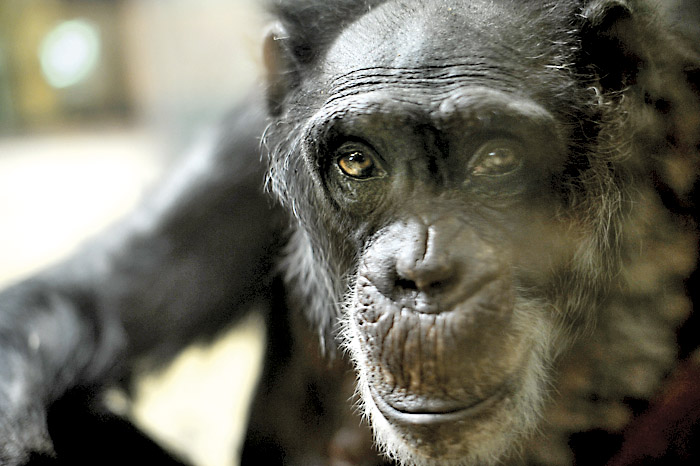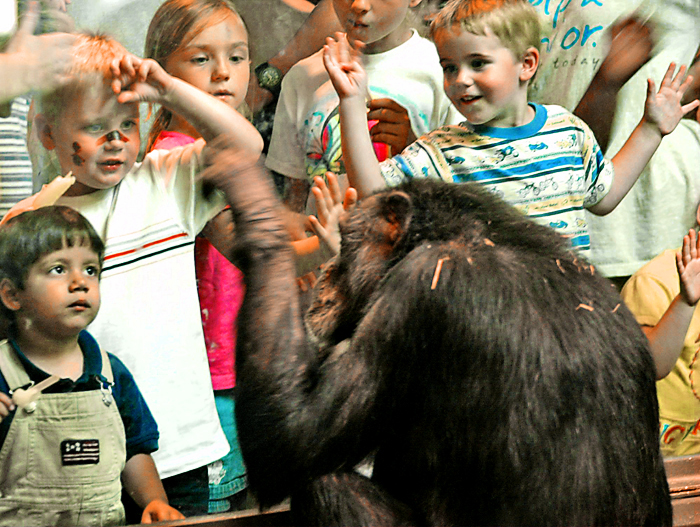Hank the chimpanzee -- the most famous resident of the Chattanooga Zoo at Warner Park -- died in his sleep Sunday night, becoming the seventh animal to die there in the past month.
That statistic has a number of people concerned.
"It's been kind of a tough time for us, but when you deal with this many animals, you certainly do have losses," said Darde Long, executive director at the zoo. "Our zoo also has often been a home for animals that came from very bad situations."
But some former zoo workers and a local university anthropologist say the numbers bear a closer look.
PDF: Zoo inspections 2008-2010
"For me that's too many animals in the course of a few weeks," said Deborah Bond, who worked at the zoo for seven years until she transferred to another city job at McKamey Animal Shelter when the Friends of the Zoo took over operation of the zoo in October.
"I hear there are two different sides of every story," she said of the animal deaths. "I honestly don't know what to believe, but a lot of staff there now don't have prior experience with large animals. I think a lot of the issues happening there are due to some of the [newer] staff not being taught what to look for."
Dr. H. Lyn Miles, a University of Chattanooga Foundation Professor of Anthropology at UTC, said she often had sought more access to Hank, who was 42, for study purposes. She now wants to know more about his death.
"I think it's great people are asking questions," she said. "These animal deaths always need to be investigated but particularly those of higher intelligence animals. We need to know more about how we can better care for them in captivity."
Long said necropsies from the University of Tennessee veterinarian school have been ordered on Hank and other animals that died recently at the zoo. Other deaths include:
* A male muntjac, a small type of Asian deer that died last month after a visitor to Holiday Lights at the Chattanooga Zoo noticed he was struggling in the koi pond, according to other former workers.
* Two marmosets that died while their regular keeper was on vacation and another keeper apparently was not scheduled to tend to them, they said.
* A female muntjac that Long said died from a twisted intestine.
* Two baby cub snow leopards that died shortly after being born outside in freezing temperatures while the cats may have been locked outside their shelter, former workers said.
Some good news is that one snow leopard cub survived the cold birthing.
Zoo spokeswoman Robin Derryberry announced the cub's birth Monday afternoon after Hank's death became public knowledge.
The Chattanooga Zoo exchanged one of its female snow leopards with a zoo in Pittsburgh to begin breeding the snow leopards. Snow leopard cubs have only a 40 percent survival rate, Derryberry said.
"We've had a few deaths, but these animals are very well cared for at this zoo," Derryberry said.
"We've been on a bit of a maternity ward binge lately with all of these births," Derryberry said, noting that last January the zoo also helped deliver two cotton top tamarin monkeys.
Hank's timeline1968 -- Hank is born in a rain forest in Africa.1969 -- Hank is captured and sold to a circus.1976 -- Hank is donated to the Warner Park Zoo.1985 -- Friends of the Zoo is established.1992 -- "Hank's Playground" is built allowing him to walk on grass for the first time in 16 years.2001 -- Zoo acquires five chimps from the Fort Worth Zoo. Gombe Forest exhibit is completed.2005 -- Hank is introduced to the Zoo's eldest female chimp, Josie. This is the first physical contact Hank has had with another chimp in more than 29 years.2008 -- Hank celebrates his 40th birthday.2011 -- Hank dies at the age of 42.
The zoo, which is owned by the city, has more than 200 animals and is inspected by three agencies.
Tennessee Wildlife and Resources Agency captive wildlife coordinator Walter Cook said he has never seen significant problems with the zoo in the 17 years he's been checking its facilities, and zookeepers always have complied with his requests.
The U.S. Department of Agriculture is charged with animal safety and treatment inspections.
USDA spokesman David Sacks said the most recent inspection there, dated Dec. 20, 2010, shows a repeat citation -- something that automatically triggers a reinspection within 90 days.
USDA normally does one surprise inspection yearly when new problems are noted, he said. In 2010, the Chattanooga zoo was inspected twice: Sept. 29 and Dec. 20.
Among items noted by the inspector in 2010 were expired drugs in the animal hospital, inadequate pest control, an inadequate fencing issue and several thin animals for which weight records and treatment documentation were inadequate. The September inspection noted that at least one complaint about a thin animal had been filed by a member of the public.
The Association of Zoos and Aquariums also inspects and rates its member facilities every five years.
Long said the Chattanooga Zoo is among the 10 percent of U.S. zoos that are accredited by the AZA.

